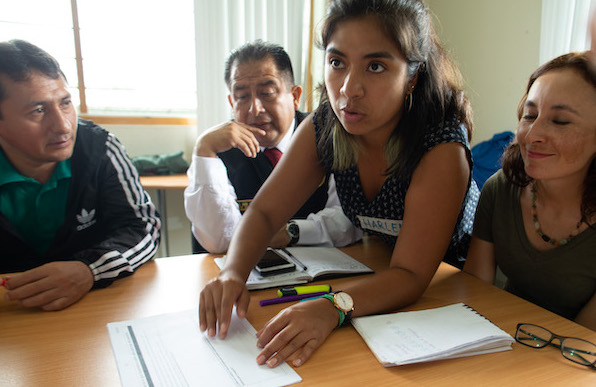
As collaborative efforts to manage landscapes more sustainably grow around the world, so does the need for new ways of monitoring their impact.
That is why we — scientists with the Center for International Forestry Research (CIFOR) — worked with 14 multi-stakeholder forums in Brazil, Ethiopia, Indonesia and Peru to understand how to make their processes and outcomes more equitable.
Although many organizers have operated under the belief that their forums foster equity simply because Indigenous peoples and local communities were invited to the table, for many people this was not enough.
We found that most multi-stakeholder forums failed to look deeper or address issues of inequity, and that many indigenous and local community representatives stopped participating.
This prompted us to collaborate with the participants and organizers of two forums in Peru and one in Indonesia to develop “How are we doing?” a tool designed to measure adaptive and reflexive learning to ensure processes and outcomes become more equitable. It seeks to support Indigenous and local communities at the forefront of the struggle for more equitably managed landscapes after being subject to decades of top-down decision making.
The need for a tool
Alejandro Irey is a member of the Indigenous Harakbut People in the Madre de Dios region of the Peruvian Amazon. He leads Coharyima, an organization representing 15 Indigenous communities in the area – Harakbut People’s ancestral territory. Its rich biodiversity is under threat from wildcat gold mining and deforestation.
Most of the communities represented by Coharyima reside within the buffer zone of the Amarakaeri Communal Reserve. This protected area, which covers more than 400,000 hectares, is recognized by the International Union for the Conservation of Nature (IUCN) for its successful co-management by Indigenous peoples and the Peruvian government’s natural protected areas service (SERNANP).The tool / Tool development – Amarakaeri Communal Reserve’s management committee (Juan Pablo Sarmiento Barletti/CIFOR)
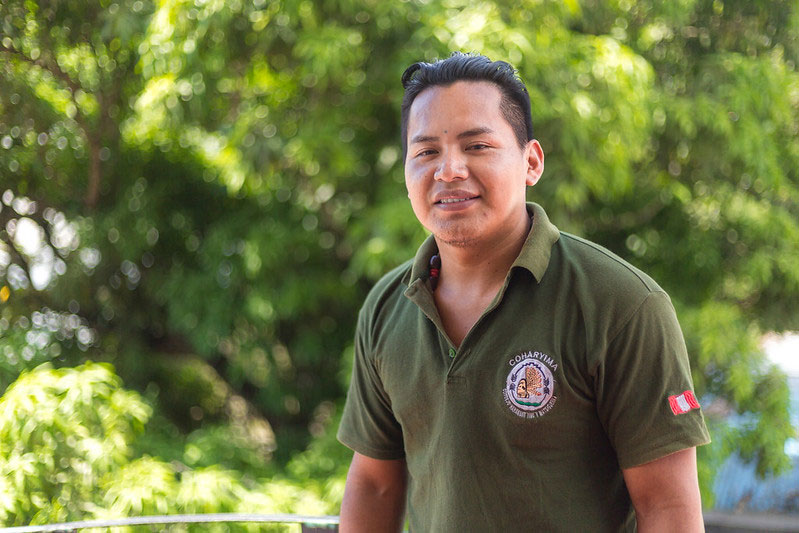
Alejandro Irey – president, Amarakaeri Communal Reserve’s management committee (Pavel Martiarena/CIFOR)
Maria Celmira Bustamante lives in Palestina, a non-Indigenous local community in San Martin, also in Peru’s Amazon, where she leads her community’s sustainable tourism initiative. Coffee and rice plantations, an increasing road infrastructure, and conflicts between Indigenous communities and migrant farmers are common throughout the area. The community is situated in the buffer zone of the Alto Mayo Protected Forest, a 182,000 ha protected area, which is Peru’s most financially successful REDD+ (Reducing Emissions from Deforestation and forest Degradation) initiative.
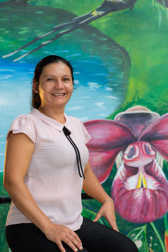
The livelihoods of Irey, Bustamente and their communities depend upon sustainable management of these protected landscapes.
“It’s in our interest to defend and conserve the forest for our future and the future of our children,” says Bustamante. “We live off nature and must protect her.”
The areas surrounding the Amarakaeri Communal Reserve and the Alto Mayo Protected Forest are embroiled in a variety of conflicts related to unsustainable land and resource use. Many are connected to development initiatives which sideline people with unequal access to economic, material and political resources.
Yet Peru’s recent expansion of participatory spaces for Indigenous and local people such as Irey and Bustamante offers the chance to transform environmental management. They are effecting change through their leadership in multi-stakeholder management committees, one important example of such participatory spaces.
Collaborating for more sustainable landscapes
In Peru, management committees are legally required multi-stakeholder forums negotiating local participation in a protected area’s management. These forums include participants as diverse as Indigenous peoples and local communities, municipalities, tourism companies, farmers’ cooperatives, conservation groups, local police, non-governmental organizations, universities and oil companies.
This diversity is typical of multi-stakeholder forums and gives forums their potential to improve collaboration between communities and various levels of government to address environmental challenges.
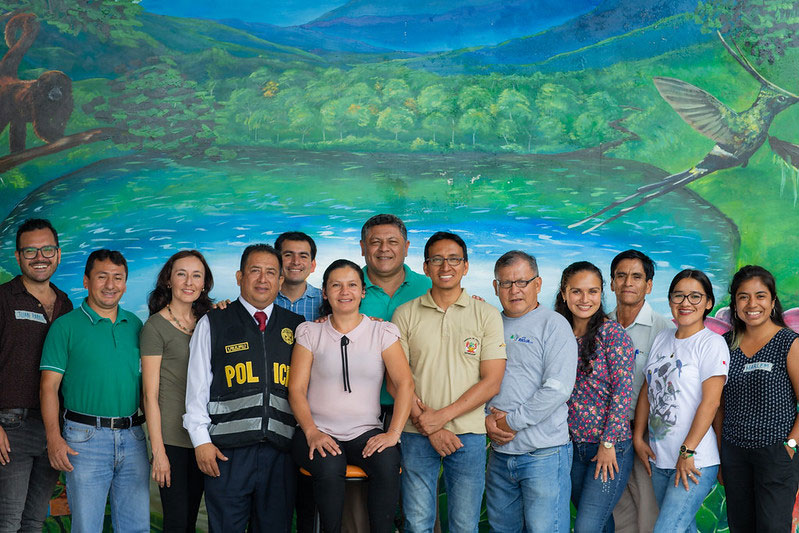
CIFOR researchers with the Alto Mayo Protected Forest’s management committee (Marlon del Aguila/CIFOR)
These multi-stakeholder forums include people — like Irey and Bustamante — who have historically been excluded from participating in decision-making on environmental issues that affect their rights, territories and livelihoods.
Participating in “the management committee is part of our work in defense of our ancestral territory and our rights as Indigenous peoples,” Irey says. “When we participate, we show that we too have proposals on how to manage the reserve and the capacities to (support its management).”
This is a significant statement if we consider that the generation of Irey’s grandparents lived in voluntary isolation in the area that is now the Amarakaeri Communal Reserve, which means that direct contact and engagement with the Peruvian state and national society is very recent.
How are we doing? A tool for adaptive and reflexive learning
The research also found that different participants had different perceptions of the value of the forums.
In collaboration with participants, the team identified the need for a tool to allow participants to monitor and reflect on the impact of their forums. The objective is to improve their work and support the possibility of more equitable processes and outcomes.
CIFOR researchers held a series of workshops with management committees led by Irey and as well as the Provincial Climate Change Council in Indonesia’s province of East Kalimantan—to collaboratively develop How are we doing?.
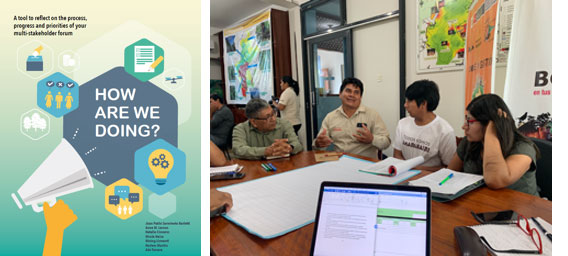
The tool has three main features that make it unique. First, it was developed together with a diverse group of forum participants. Second, it was designed to be used by forum participants and organizers themselves, not to be applied by external evaluators. And, third, its objective goes beyond a simple assessment of indicators—it invites participants to discuss and reflect on their answers.
Through reflection, participants learn from the past, consider progress and obstacles to further progress, and collectively plan how to achieve the forum’s goals in the future. Periodic evaluation and ongoing reflection are important, given the dangers of reaching agreements that benefit more powerful actors at the expense of the less powerful.
Taking the time to evaluate together and listen to each other’s perspectives can teach participants greater appreciation for how the forums are organized and managed, enabling respectful conversations and collaborations among equals.

and Amarakaeri Communal Reserve’s (Pavel Martiarena/CIFOR) management committees
To date, the tool has been piloted in 10 multi-stakeholder forums across Indonesia and Peru, including six carried out online, in partnership with SERNANP, due to the COVID-19 pandemic.
Those pilots led to a second version of the tool developed specifically for SERNANP’s 75 management committees. A third version, a gender-responsive tool to reflect and learn about territorial governance, is being developed with Peru’s National Organization for Andean and Amazonian Women (ONAMIAP).
Finally, a fourth version is being developed with women’s organizations and gender practitioners in Africa, Asia and Latin America. All four tools will be available as part of CIFOR’s adaptive and reflexive learning toolkit for more inclusive and resilient landscape management processes.
These tools will not challenge power relations and inequalities on their own. However, they all support regular reflection which can, in turn, support better communication, mutual understanding and adaptive learning – especially as part of a strategy for change.

We want you to share Forests News content, which is licensed under Creative Commons Attribution-NonCommercial-ShareAlike 4.0 International (CC BY-NC-SA 4.0). This means you are free to redistribute our material for non-commercial purposes. All we ask is that you give Forests News appropriate credit and link to the original Forests News content, indicate if changes were made, and distribute your contributions under the same Creative Commons license. You must notify Forests News if you repost, reprint or reuse our materials by contacting forestsnews@cifor-icraf.org.